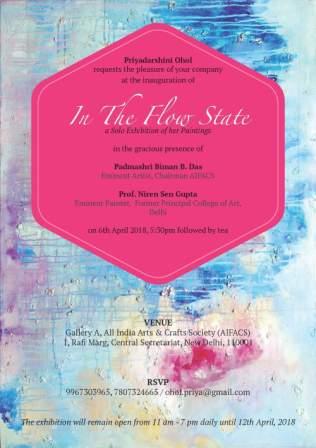Vir Pratap Singh Gautam
 Humans haven’t learnt anything from the pandemic in the world, or it might be better to say, Indians have not. Everything that we see on this earth is practically impermanent and no one has the boon of eternity, yet we fail to acknowledge that the world belongs equally to others as much as humans. A recent incident made it to the headlines, about “a pregnant elephant was fed a pineapple with crackers stuffed inside.” The pineapple burst in the elephant’s mouth itself (and couldn’t go deeper inside the body) which eventually led to its death. The incident was followed by huge outrage on social media in the name of animal cruelty. I write about this here neither to condemn the incident, nor to express my grief by stating it to be sorrowful and inhumane behavior.
Humans haven’t learnt anything from the pandemic in the world, or it might be better to say, Indians have not. Everything that we see on this earth is practically impermanent and no one has the boon of eternity, yet we fail to acknowledge that the world belongs equally to others as much as humans. A recent incident made it to the headlines, about “a pregnant elephant was fed a pineapple with crackers stuffed inside.” The pineapple burst in the elephant’s mouth itself (and couldn’t go deeper inside the body) which eventually led to its death. The incident was followed by huge outrage on social media in the name of animal cruelty. I write about this here neither to condemn the incident, nor to express my grief by stating it to be sorrowful and inhumane behavior.
It’s not my insensitivity towards animals but sensitivity towards the social corruption that makes me put down these words here. I believe that if women like Safoora Zargar (who is also pregnant) could be denied bail on account of her participation in a protest, with the state showing its apathy, the society questioning her and the court speaking the language of the oppressor, then outraging with your shallow animal love holds no ground. Though my focus here is not to talk about Safoora or the sad incident of animal cruelty, I take the pain to present to you the sleazy nature of Indian society constituted predominantly by Hindus and also the reason for such behavior.
Having briefly mentioned the incident of a pregnant elephant in Kerala, I now draw an example from Hindu mythology. Though I am not a big fan of either taking examples or centering my arguments on mythology, given how deeply mythology is ingrained in the habits of Hindu day to day life, it compels me to draw examples from there to debunk their crooked principles.
This example is of Shiva decapitating his so-called son Ganesha, and replacing it with the head of an elephant. This story is from the Shiva Purana, and it says Parvati was getting ready for a bath, and commanded her son to guard the door and not let anybody inside. The son was loyal to her and did as she asked him to. When Shiva approached the door, he was told the same and was refused entry into his own house. The whole situation enraged him and he severed the head of his own son. When this news reached Parvati, she was infuriated and pledged to destroy the entire universe. When Brahma approached her to not undertake such devastation, she put forward her conditions, of which one was to bring Ganesha back to life. Shiva expressed his inability to reinstate the same head, and thus asked Brahma to bring the head of the first creature he came across while laying with its head facing North. Brahma returned with the head of a strong and powerful elephant; this head was then placed on the human torso and that’s how Ganesha’s present form came to be.
Coming back to the incident from the state of Kerala as reported in the media, a senior forest officer gave testimony about the pregnant elephant being fed an explosive stuffed pineapple which caused the rupture of her jaw. As per the officials, the elephant stood in the river with her head immersed in water to get temporary relief before eventual death. After this news went viral, everybody poured in their grief and showered their rage over the entire incident on social media. This included even politicians like Maneka Gandhi, already known for her animal love. Along with this reputation, she also holds a position in the BJP, which is known to take forward the Hindu agenda actively.
The two examples discussed above have a similarity, which is the eventual death of an elephant that posed no threat to anyone. Thus, I raise my first question: why, in the stated examples, one is revered as godly and the other invites legal action? This question unveils the general bankruptcy in the Hindu religion and society. The same conclusions can be reached if we draw parallels between numerous contemporary incidents and the Hindu mythological world. It is characteristic of Hindu ‘law’ that it places them in a convenient position to accommodate and subsume nearly everything under their idea of Hindu religion or sanatan dharma which may in principle be diametrically opposite to some of their other practices.
The acts of Hindus in general and a Hindu as an individual are outcomes based on convenience and are not guided by any fundamentals or principles. They have set laws laid down in their religion or a better description of it would be – Hinduism being a matter of convenience guided by shrewd cunningness, bound by laws of whose violation is penalised as per respective laid down rules. To support my point, I borrow the words of Dr. B. R Ambedkar: “Religion must mainly be a matter of principles only. It cannot be a matter of rules. The moment it degenerates into rules it ceases to be religion.”1
From this I say that a self-acclaimed, practicing Hindu finds himself in no moral or social dilemma, consciously or subconsciously, before taking a position on any incident. To further back the point, I take help from Deendayal Upadhyaya. “… the same sacred code” says Upadhyaya “… the Veda contains not only the records of different phases of religious thought, but of doctrines which we may call almost diametrically opposed to each other”.2 This statement makes it clear how Hinduism is able to subsume antagonistic philosophies and yet continue functioning on its other oppressive acts. This essentially is an outcome of non-adherence to any code of moral conduct, and due to this incongruity, people can do whatsoever diverse activities on a moral level, and yet retain the privilege to be grouped under the umbrella term of Hindu.
To make this point more lucid, I draw another parallel among two of their prominent gods, having a fan following of their own: Rama and Parshuram, both being incarnations of the same god Vishnu and yet different. Jotiba Phule has tried to trace the evolution of this avatara theory in a historical context as a struggle between the aarya and the indigenous. Parshuram is said to be an earlier incarnation of Vishnu, who was a Brahmin by Varna but had picked up an axe as his weapon. An important point to note here is that this was supposed to be a time when every Varna was supposed to perform the acts designated to their it and establish the rule of dharma. The work of the Brahmin was to gain and impart knowledge while the fighting work was left to the ksyatriya. But we come across a very different version of Brahmin contravening the Varna order, so we could designate Parshuram to be one of the first defaulters of the caste order imposed by the Brahmin themselves.
His other characteristics which were said to describe him were his aggressive nature and serenity. I feel no further discussion over these contradictory characteristics needs to be carried over at length. The key information about him which is spread among the masses is his extermination of the ksyatriya Varna from the face of the earth, numerous times. On the other hand, Rama was a subsequent incarnation in the order being a ksyatriya and known for his righteousness and upholding of the Varna order. He, in the Hindu mythology, beheaded Shambuka, a person from a lower caste, who was in quest of knowledge and spreading the same while living in distant forests of the times. Ram is also known to have abandoned his wife Sita on account of her abduction, which in turn was a result of Rama himself injuring the sister of Ravana! Such is the case with their gods who are supposed to have lived lives worth imitating. Such is the case with those who are looked upon as the role models.
I feel the above two comparisons are enough to uncover the multiplicity in the nonexistent principles laid down by the Hindu law givers. One may find themselves in a very bewildering position when they find the same personality engaging in acts which are contradictory to the values he is merchandising. The social fraudulence of the Hindu masses is just an outcome of the unknown principles of its foundation.
Notes
1. Dr. B. R. Ambedkar, Writing and Speeches Vol.1, Dr. Ambedkar foundation, (Jan 2014), p.75
2. Manoj Singh, Deendayal Upadhyyaya, Neelkanth Prakashan, 2019, p. 35
~~~
Vir Pratap Singh Gautam is an MA (History) from UoH (Gold Medalist), a JRF holder (History) and former General Secretary of ASA-HCU.
,










